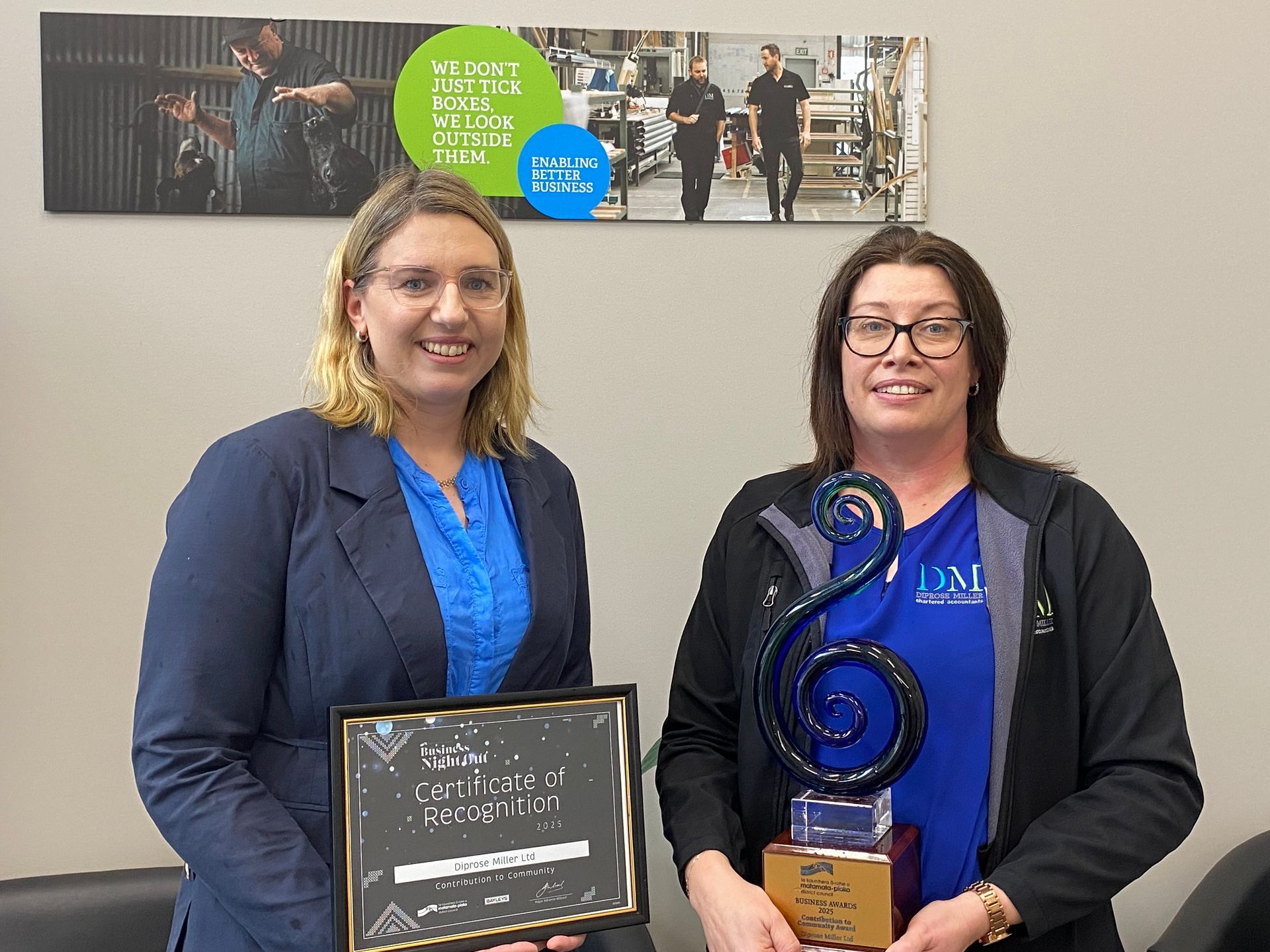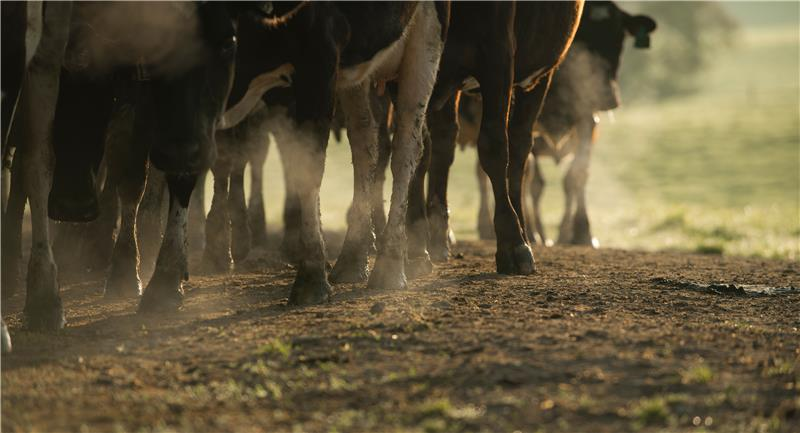Confidence check: Where do you sit on the business barometer?
6 May 2025
Business confidence is a key economic indicator, and right now in New Zealand, the latest data is showing some positive signs:
- Signs of recovery – After a slow period, economic activity has started to pick up with early signs of renewed business momentum.
- Cautious optimism – Business confidence is improving, but caution lingers as companies navigate costs, demand, and future economic uncertainty.
- Global uncertainty – While domestic trends are improving, global trade tensions and price volatility could still impact supply chains, costs, and long-term stability.
Use the current business confidence to your advantage
- In any economic environment, the key is to adapt and adjust to protect and future-proof your business:
- Consider your growth strategy. If confidence continues to rise, now could be a good time to expand your operations, invest in new equipment, or explore new revenue streams.
- Hiring and workforce planning. Business optimism often fuels recruitment and team expansion. Confidence is on firmer ground, but uncertainty remains. If hiring, focus on roles that support long-term growth. If caution is needed, consider upskilling existing staff instead.
- Market positioning. Shifting confidence levels can change customer spending habits. Are there opportunities to refine your pricing, enhance your marketing efforts, or introduce premium services that align with shifting demands?
- Financing decisions. If borrowing costs continue to ease, consider refinancing loans at a lower rate or securing funds for expansion—just make sure you weigh affordability before taking on new debt.
Understanding the current business climate is key to making informed financial decisions. Want tailored insights for your industry? We’re here to help.

10 October 2025
Building a property portfolio is about more than just acquiring properties - it’s about managing the financial details that keep growth sustainable. From tracking cash flow to structuring ownership, the right accounting approach helps investors scale with confidence. Here are practical tips to strengthen your portfolio while maintaining financial stability. 1. Accurate Record Keeping Maintaining accurate and detailed financial records is crucial for managing a growing property portfolio. This includes: Income Tracking: Document rental income for each property separately. Expense Records: Keep a record of all expenses, including maintenance, repair costs, property management fees, rates and insurance. Mortgage Documentation: Track loan balances, interest rates, and payment schedules. Using accounting software tailored for property management can streamline this process and help you generate useful financial reports. 2. Understand Tax Implications As your portfolio grows, so will the complexity of your tax responsibilities. Ensure you are familiar with: Deductible Expenses: Understand which expenses are tax-deductible to maximize your tax benefits. Common examples include mortgage interest, property taxes, and operational costs. Bright-Line Rules: Be aware of potential bright-line tax liabilities when selling property and explore tax strategies to mitigate these costs. Consulting with a tax professional or accountant who specializes in real estate can provide valuable guidance. 3. Use Strategic Financing Leverage strategic financing options to expand your property portfolio effectively: Refinancing: Consider refinancing your existing properties to take advantage of lower interest rates or to extract equity for new investments. Portfolio Loans: Utilize portfolio loans that enable you to finance several properties under one consolidated loan, simplifying management and potentially offering better terms. Proper financial analysis will ensure that any borrowed capital is sustainable and beneficial in the long term. 4. Perform Regular Financial Analysis Regularly assess the financial performance of your property investments to make informed decisions: Cash Flow Analysis: Continually monitor cash flow to ensure your properties are generating surplus cash that can fund new purchases or improvements. Profitability Metrics: Calculate metrics such as ROI (Return on Investment) and cap rates (Capitalization Rate) to evaluate the performance of individual properties. Leveraging these analyses will help you identify underperforming assets and make strategic decisions on acquisitions or disposals. 5. Plan for Contingencies Have a financial contingency plan in place to shield your portfolio from unexpected events, such as market downturns or natural disasters. This might include: Emergency Funds: Maintain a reserve of liquid assets to cover unexpected expenses or periods of reduced income. Insurance Coverage: Ensure adequate insurance coverage for each property to mitigate risks from damage or liability. 6. Engage Professional Services As your property portfolio expands, the complexities of managing it can increase significantly. Consider engaging professionals such as: Accountants: They can manage the intricacies of financial records, compliance, and tax planning. Property Managers: They can handle daily operations, tenant management, and maintenance, allowing you to focus on strategic growth. Growing a property portfolio requires careful financial planning and management. By keeping accurate records, understanding tax implications, strategically using financing, regularly analysing financial performance, and planning for contingencies, you can efficiently expand your real estate investments. Engaging professional services, including accounting support, will provide peace of mind and contribute to the long-term success of your portfolio. If you need expert accounting services tailored to property investment portfolios, feel free to reach out to us . Our team understands the nuances of real estate accounting and can provide personalized advice and solutions to support your investment objectives.

8 October 2025
Property development can deliver strong rewards, but navigating tax obligations is rarely straightforward. Overlooking key rules can erode profits or create unexpected liabilities. To help you stay compliant and protect your bottom line, here are five common tax traps developers encounter - and how to avoid them 1. Ignoring Goods and Services Tax (GST) Obligations Many property developers overlook their GST obligations, which can result in substantial penalties. Solution : Ensure you are registered for GST if your turnover exceeds the registration threshold. Keep detailed records of all sales and purchases to help accurately calculate your GST liabilities. 2. Incorrectly Claiming Deductions Expenses related to property development can often be incorrectly claimed as immediate deductions, leading to issues during tax assessments. Solution : Distinguish between capital and revenue expenses. Only claim deductions you're entitled to and ensure expenses like interest and holding costs, typically capitalized until the property is completed and sold, are not incorrectly expensed. 3. Overlooking Potential Bright-Line Implications Misunderstanding when and how the bright-line rule applies can lead to unexpected tax bills. Solution : Plan each development project with a clear understanding of the tax implications. Consult with your accountant to determine whether a property is being held as trading stock (where profits count as ordinary income) or as an investment (potentially subjecting it to the bright-line rule). 4. Mismanaging Property Titles and Ownership Structures The structure in which you hold property plays a crucial role in determining tax liabilities. Solution : Review your ownership structures - such as individuals, companies, or trusts-as each has different taxation implications. Strategic planning with a tax advisor can help optimize your tax outcomes and ensure compliance from the outset. 5. Failing to Comply with PAYE and Withholding Tax Requirements If you engage workers or sub-contractors, failing to meet PAYE and/or withholding tax obligations can lead to penalties. Solution : Implement a robust payroll system to ensure PAYE and withholding tax is managed correctly. Regularly review and update subcontractor agreements and ensure compliance with Inland Revenue requirements to avoid potential penalties. Final Thoughts Navigating the tax landscape in property development can be intricate and demanding, but with thorough planning and professional advice, these common tax traps can be avoided. Partnering with a knowledgeable accounting firm can provide you with the support and guidance necessary to manage your tax obligations effectively, ensuring the success and profitability of your property development projects. Our team is ready to help guide you through the tax complexities of development

1 October 2025
Diprose Miller is proud to have received the Contribution to Community Award at the 2025 Matamata-Piako District Council’s Business Night Out. This award recognises the positive impact our directors and staff are making within our local community - and in particular, the difference that our Diprose Miller Community Fund is making to a wide range of local groups. Why this award matters a lot to us Community has always been at the heart of Diprose Miller. For us, success isn’t just measured in numbers; it’s measured in the wellbeing of the people and groups around us. Being recognised for our contribution affirms the values we live by: supporting local organisations, helping people feel they belong, and celebrating the region we live in. About the Diprose Miller Community Fund The Diprose Miller Community Fund was established to provide practical support to not-for-profit organisations and individuals who are working hard to make our communities better places to live. The fund contributes towards specific project costs that might otherwise not be affordable - easing financial pressure so groups can focus on what matters most. The impact so far Since its launch, the fund has supported a wide range of initiatives, from local sports clubs to schools, theatre, art and music groups, programmes supporting vulnerable people and community projects within the farming sector. Whether it’s new uniforms for a sports team, resources for a service to the community, or helping a local group host an event, each contribution adds up to stronger connections and greater opportunities across our district. Looking ahead We’re honoured to be recognised with this award - but more importantly, we’re excited to continue investing in the wellbeing of our community. As our district grows and changes, we remain committed to supporting those who make a difference every day. Congratulations also to the many other winners and finalists celebrated on the night - together, we’re building a vibrant, connected, and resilient community.

11 September 2025
Fonterra’s recent announcement - $16 billion in cash returns and a 15% revenue boost - is great news for farmers. With strong returns flowing in, many are asking: what’s the smartest way to reinvest? Paying down debt has long been the default. But with stronger equity positions and healthier balance sheets, now’s the time to think bigger. Here are three areas where reinvestment can drive long-term growth and resilience. 1. Rethink land use If a change in land use could lift your profitability, it’s worth exploring. Whether it’s diversifying into horticulture, or leasing out underused land, banks are increasingly backing strategic shifts that build equity. The right move could reshape your farm’s future. 2. Invest in business essentials Reinvesting in business essentials helps protect your equity and maintain leverage with lenders and suppliers. This might mean upgrading infrastructure, ticking off your farm environment plan, or tackling deferred maintenance. These aren’t just compliance tasks, they’re the foundation of your long-term viability. 3. Streamline for efficiency Technology and infrastructure upgrades can reduce labour hours, cut power costs, and future-proof your operation. Think solar panels, cow collars, automatic drafting systems, or finally replacing that tractor that’s costing more than it’s worth. With investment incentives currently available, now’s a great time to act. The takeaway Strong returns give you options. Reinvesting in land use, business essentials, and efficiency can strengthen your balance sheet, boost productivity, and set your farm up for long-term success. At Diprose Miller, we help farmers make smart, strategic decisions that support growth and protect family prosperity. If you’re ready to put your returns to work, let’s talk.

4 September 2025
Sometimes you may pay your employees sums in addition to their normal wages, such as: allowances benefits holiday pay lump sum payments Some are tax free, but most are taxable. For some, the employer pays the associated tax. For others, the employer deducts PAYE on the employee's behalf. You may also provide various non-cash benefits to your employees as part of their total employment package. Even where the benefits are not in cash, they still have a value which is taxable. The tax treatment depends on what the payments are for and the circumstances that apply. A brief overview Allowances There are different kinds of allowances but if it's a straightforward reimbursement to the employee for out-of-pocket work-related expenses, the allowance isn't taxable. Mileage, meals, and tools (including telecommunication devices) are examples. If the amount of the allowance is more than the actual amount of the expense, then the difference is taxable. The employee will be subject to PAYE or you will pay FBT on the difference. What about travel? Where you pay a travel allowance to an employee, you need to determine whether you are liable for FBT (if you paid for the travel) or the employee is liable for PAYE (if you reimbursed the employee’s travel costs). For a travel allowance to be tax-free, the travel must be ‘on work’ rather than just ‘getting to work’. Different factors affect the tax treatment. Can I claim GST on benefits and allowances paid to employees? You may be able to claim GST on allowances paid to employees for work-related expenses, if you are registered for GST. Keep all relevant tax invoices. You can’t claim GST for items that aren’t employment related, so this generally rules out claims on benefits. Benefits Benefits include anything that benefits the employee. They're not wages as such, but they're part of the employee's total employment package. As they're a perk of the job for the employee, you, as the employer, will usually pay fringe benefit tax (FBT) or be subject to PAYE on the value of the benefit. Benefits fall into several categories: non-cash, cash, and so-called special benefits. Holiday pay The employee is liable for PAYE on pay for annual leave and statutory holidays. Lump sum payments Pretty much anything else is classified as lump sum payments. These include bonuses, cashed-in annual leave, payments for accepting restrictive covenants, exit inducement payments, gratuities, or back pay, redundancy payments, retiring allowances, and overtime. Employees are usually liable for PAYE on these payments. Note that: the PAYE rate will vary depending on the employee's total taxable income ACC earners' levy won't apply above the maximum liable income threshold redundancy payments and retiring allowances are not subject to ACC earners' levy It can be confusing working out the tax treatment of these payments for your business. Let us know if you would like to discuss how the rules apply to your business.

21 August 2025
Keeping on top of the financial management of your business can be hard work. It's possible to have a profitable business that is struggling to find the cash flow to pay expenses and fund growth. Likewise, you could have positive cash flow but are not turning a profit, particularly if you are re-investing profits back into the capital expenditure. Turning a profit is at the heart of running any successful business But without an even and predictable flow of cash into the company, you can't cover your overheads, you can't pay your employees, and you can't run your day-to-day operations – let alone think about expanding and growing the business. In the end, you need both. But if you’re going to be in control of your financial destiny, it’s important to get your head around the important process of cash flow management. Let’s look at some of the key things to understand about your finances: Profit is a by-product of a successful business – as the owner, you want to make profits, but profitability isn’t the only goal. A business can easily be profitable, but also be highly unstable in the longer term. What you want is stability and consistent revenues. Cash flow keeps your business alive – good revenues (income) serve to bring cash into the business. Without cash to cover your operating expenses, you have no means to keep the lights on in the business. So cash really is king! Know your cost base and overheads – the flip side of your cash flow position is your costs. In an ideal world, you want more cash inflows than cash outflows, so it’s important to know your expenses and costs and to manage them carefully. Be proactive about spend management and easing expenditure – if you can take action that reduces your spending, that is hugely positive for your cash flow position. Choose cheaper suppliers, negotiate better deals and bring that cost base down. Drive more revenue, through increased sales and marketing activity – if you can increase your revenues, you also boost your cash flow. So it’s important to be proactive about running targeted sales and marketing campaigns to increase your sales. Keep the cash flowing and the profits take care of themselves – if you achieve the ideal cash flow position, the company sits on solid financial foundations, the cash is there for investment and the business can grow. It’s that simple. Talk to us about improving your cash flow management Whether you’re new to running a business, or a seasoned owner who needs some financial support, we can give you the cash flow advice you need. We’ll review your finances, delve down into your cash flow, and come up with key ways for you to increase your cash income and reduce your cash expenses. It only takes a few small changes to achieve a far better cash flow position for your business – helping you maintain positive cash flow AND generate profits.

14 August 2025
Unemployment in New Zealand has been steadily rising over the past two years. The unemployment rate has risen from 3.4% in Q1 of 2023, to 5.1% in Q4 of 2024. The rate has remained static for Q1 of 2025, but this prolonged rate of unemployment may be having a detrimental impact on the future of your small business. Let’s look at the alignment between unemployment and your future growth. 1. Reduced consumer spending: With more people out of work, consumers have less disposable income to play with. This leads to customers tightening their belts and less consumer spending on non-essential goods and services. This can directly impact your sales and monthly revenue, forcing you into a corner where prices (and margins) might be decreased to encourage more sales. 2. Low morale and poor employee retention: While a larger talent pool might seem beneficial, high unemployment can sometimes create a sense of job insecurity among your existing employees. Unstable economic conditions can lead to decreased morale, higher stress levels, and a potential struggle to retain top talent, who may feel less secure in their current roles. 3. Difficulty securing loans and funding: Banks become more risk-averse when there’s evidence of high unemployment, poor economic conditions and unpredictable market conditions. The recent CPA Australia Asia-Pacific Small Business Survey found that only 26.4% of Kiwi businesses expect it to be easy to access finance. Reduced access to funding can lead to poor cash flow, slower growth and an increasing need to reduce costs. 4. Decline in overall business confidence: The combined impact of poor economic conditions and high unemployment is significant. This unpredictable and unstable outlook can have a major effect on business confidence. New Zealand's ANZ Business Outlook Index fell sharply to 36.6 in May 2025 from 49.3 in the previous month. This may deter your small business from investing, innovating or expanding – all factors that could hinder your own long-term growth and stability. If you need support getting your business through the tough times – we’re here to help. There are still ways to control your spending, drive growth and do your bit to provide employment.






